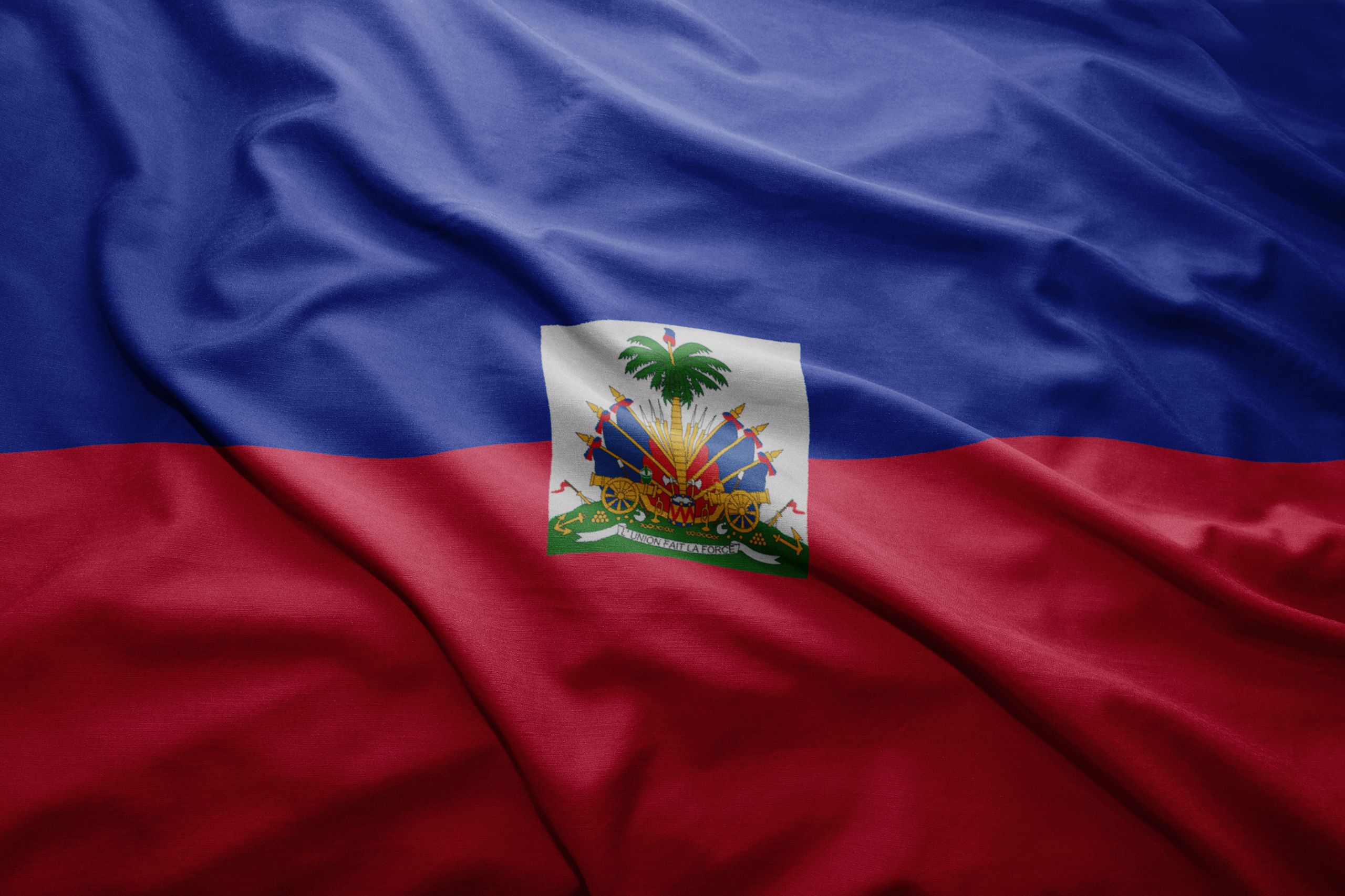Haitian Flag Day Celebration:
Ambassador of the Republic of Haiti in the UK, His Excellency M. Euvrard Saint Amand writes on his country’s 219th anniversary of the flag, an important milestone in Haiti’s 1804 Independence

219 years ago, a group of slaves – brave men and women of dignity, torn from several tribes of the African continent – defeated slavery in its profound roots, and on 18 May 1803, at the Congress of Arcahaie, created the two-coloured flag of the Republic of Haiti. This majestic act radically changed the course of human history. The normality of slavery and colonization was called into question.

Flag Day 18th May 2022
Flag Day 18th May 2022
To understand the true meaning of the celebration of the flag, we should complete a triple meditation. The first concerns the historical foundations of the flag as an expression of the rejection of slavery. The second focuses on the meaning of the two-tone in the construction of the world's first free Black nation-state. Finally, the third concerns its contributions to the movement towards freedom around the world.
The date of 18 May in Haiti, the flag day, is also the day of celebration of university. I will address those two sides of the celebration.
Historical foundations of the flag in the quest for freedom
As you know, Haiti was a former colony of France for more than three centuries. In 1791, African slaves began the revolution that followed the abolition of slavery in 1794. As reported by various historians, such as Thomas Madiou, when Emperor Napoleon Bonaparte decided to re-establish slavery in Santo Domingo in 1802, the slaves stood united to free themselves. During the Congress of Archaïe, they tore off the white colour of the French tricolor flag, keeping the blue and red as a sign of rejection of slavery.
In fact, the slaves understood that it was necessary to invent an emancipatory identity through the symbol of the flag against the blindness and greed of the modern world.
Historically, the first flag of the island of Saint-Domingue (now Haiti) dates to the time of Toussaint Louverture who adopted the French tricolor in 1798. According to Michel Hector, it was from the Congress of Archaïe of 1803, held by General Jean Jacques Dessalines, that the indigenous flag was truly created.

During the Congress of Archaïe, they tore off the white colour of the French tricolor flag, keeping the blue and red as a sign of rejection of slavery.
Ambassador of Haiti with Dean of the Diplomatic Corps and Ambassador of Kuwait
First sewn by Haitian seamstress, patriot and national heroine, Catherine Flon, in 1803, the flag had the words: ‘Liberté ou la Mort’ (freedom or death), which cleverly explains the mindset of the former slaves to reject the idea of slavery. Subsequently, according to Beaubrun Ardouin, the Haitian flag underwent successive modifications that reflect specific moments in the history of the Republic of Haiti. After Dessalines’ death in 1806, successive governments changed the flag: blue and red were often replaced or even supplemented by black, and the coat of arms was abandoned.
Under the Duvalier’s administration (from 1957 to 1986), the design was replaced by a red and black flag. With the fall of the regime on 7 February 1986, the colours blue and red were rehabilitated and ratified by the Constitution on 29 March 1987. It is this two-tone, as it is before us, that we celebrate today.
Meanings of the flag in the construction of the State of Haiti
The flag is organised into two horizontal stripes, blue and red, with a palm kernel surmounted by the cap of freedom. Featuring a weapon trophy and a legend: ‘L’union fait la force’ (unity is strength), the Haitian flag is celebrated with the national anthem La Dessalinienne that was adopted in 1904. The lyrics of the Dessalinienne was written by Haitian poet Justin Lhérisson and the music composed by Nicolas Geffrard.

Ambassador of Haiti with the Marshal of the Diplomatic Corps Alistair Harrison CMG, CVO
Ambassador of Haiti with the Marshal of the Diplomatic Corps Alistair Harrison CMG, CVO
As an emblematic image and symbolic object, the Haitian flag is the manifest expression of independence. More than a break with the colonialist and slave order, the creation of the flag is undeniable proof that the blacks of Africa were able to access political modernity to create their own state. In this regard, Cyril James in The Black Jacobins, reported: "Haiti was the first black republic outside Africa, and the second post-colonial society of the modern era (after the United States).”
Uses of the flag and perspectives
The symbolism of the flag is important for Haitians. The Haitian revolution inspired several emancipations struggles around the world. In his book, Haiti and the World. Two Centuries of International Relations, historian Arthus Weibert cites several examples of the influence that Haiti’s experience played in liberation movements in several countries.
According to historians, when Francisco de Miranda wanted to liberate Gran Colombia – composed of the current territories of Venezuela, Colombia, Ecuador – he went to Haiti and received support from President Alexandre Pétion. Upon his return from Haiti in March 1806, he created the flag of the Nation of Gran Colombia with the blue and red colors of Haiti, adding the yellow of Spain.
Another notorious example is Greece. In 1822, President Jean-Pierre Boyer sent a message of support to the Greek revolutionaries fighting against the Ottoman Empire. Haiti provided 50,000 pounds of coffee and a troop of 100 soldiers to help the Greek revolution. In recognition, the Greek revolutionaries proclaimed their independence on 1 January, the same day as Haiti’s independence. They adopt the motto ‘freedom or death,’ the same motto as Haiti’s independence.
Haiti’s independence, as a project and as a concept of human dignity, is nurtured and guaranteed in the framework of the university, which is celebrated likewise along with the flag.
I believe that the university is the guardian of our memories and the sign that characterises our identity. It is through the university that development, innovation, and research must take on their full meaning to address the challenges that Haiti must face, and to facilitate citizen awareness towards the socio-economic take-off that the country so deserves.
In short, at a time when the world is facing increasingly difficult global challenges, there is a huge need to consolidate the fundamental values of freedom, justice, inclusion and equality to make possible a better, happier and more desirable humanity for all.
These are the meanings and aspirations carried by the flag of Haiti, whose 1804 revolution is exemplary for all the oppressed in the world. It is in that context the Embassy of the Republic of Haiti in the United Kingdom is proud, honoured and thrilled to see the blue and red stripes flying for the first time, this week, on the Swedenborg building, here at the 21 Bloomsbury Way in the heart of London.
